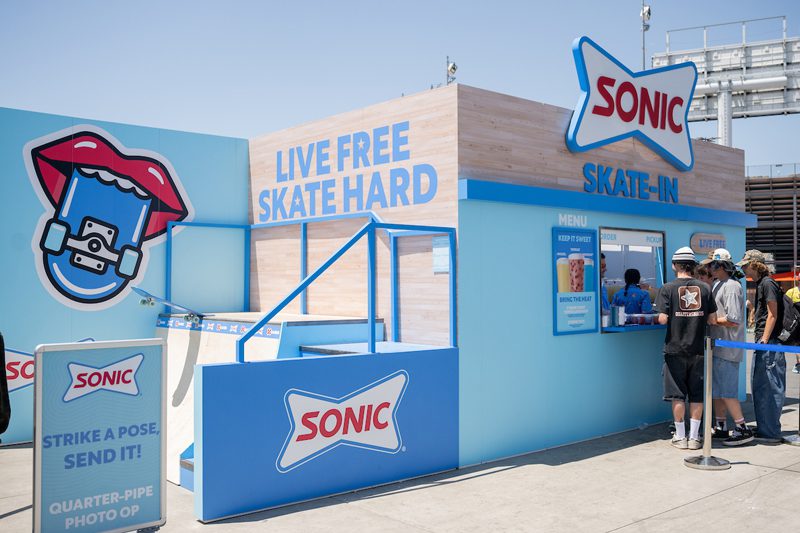The well covered $580 million acquisition of Intermix last month established Rupert Murdoch as player in the online space. If Mr. Murdoch has his way, though, Intermix will represent just the beginning of his Internet Empire. He has publicly said that he plans on setting aside upwards of $2 billion for future acquisitions, and recent rumors have identified two potentials targets for this money. The larger of the two suggests that the News Corp. chairman plans to continue a trend initiated when he picked up MySpace.com as part of the Intermix deal – a focus on the 18-34 year old demographic.
With the purchase of Intermix, Mr. Murdoch made a Cinderella story out of those who had survived, a company that began with a private to public takeover, saw itself delisted from NASDAQ, was in the center of a nasty and public dispute with its ousted ex-president and largest shareholder, and a company that was on the wrong side of a court case with Elliot Spitzer. Rupert Murdoch’s latest target, IGN Entertainment, has its own fascinating tale of survival, and it’s the topic we explore in this week’s Trends Report.
Unless you are a pretty hard-core gamer and follower of the latest console, handheld, and PC gaming news, you might not have heard of IGN Entertainment. Even if you are not a gamer, chances are that you will take more notice upon learning of their rumored price tag – $600 million. And that is on the low end. Not bad for a company that has never shown a profit in its six years of operation. While not as bad as the now defunct Webvan, IGN has lost more than $70 million since its launch. Yet, the company must be doing something right for it to attract the interest of News Corp.
IGN Entertainment began life in early 1999 as Snowball.com (Affiliation Network before that). Their model consisted of aggregating three major content networks – IGN (Internet Gaming Network), ChickClick, and PowerStudents. That next year, in March of 2000, the company went public but saw its stock price go from $15 on opening day to less than a dollar by year’s end. During the next two years the company saw losses continue to mount and underwent a series of major changes. The company dumped its broad youth coverage strategy and focused on the money, the $20+ billion spent yearly by gamers. Unfortunately for those employed during those times, the realignment also meant substantial layoffs, more than 300 of the then 500. The leaner company, now focused only on the IGN portion of its business, topped off the realignment with an official name change. They said goodbye to Snowball.com, and embraced their inner gamer by becoming IGN Entertainment, changing their ticker symbol too from SNOW to IGNX.
In May 2003, about a year after the name change, the company agreed to a $29.8 million buyout and to be taken private in a deal led by Great Hill Partners, LLC and several members of their board of directors and management team. The company continued on its relatively new focus of becoming a dominant player in the 18 – 34 male demographic online. In March of 2004, the now private company purchased GameSpy, a multi-player gaming resource site and technology company for $53.3 million. Later that year, IGN purchased movie-focused RottenTomatoes.com for $7.8 million. And, less than a year later in May 2005, the company made another purchase, picking up male lifestyle site AskMen.com for, a not too shabby, $13.5 million, although that was still less than AskMen received in initial funding.
These acquisitions helped IGN do two things, reduce its reliance on advertising and expand its reach. The percentage of advertising dollars compared to total revenue was 85% in 2002, 89% in 2003, 77% in 2004, and 69% in the first quarter of 2005. The company has 250,000 paid content subscribers, a technology licensing division, and a growing direct sales service to thank for that decrease. With respect to reach, the company’s user base grew from 4.4 million in 2001 to more than 25 million combined for its three main properties – IGN, RottenTomatoes, and AskMen. Additionally, the young male audience that they attract has, as a group, the highest level of broadband adoption and accounts for a disproportionate percentage of unique Internet visitors and total page views. They are among the heaviest users of digital entertainment and have emerged as a truly desirable and otherwise elusive segment to reach.
It’s hard to say if 25 million users who generate millions of pages of comments each month are worth the $700 million price tag that owners of IGN have targeted. The network will never equal Yahoo, and given its narrow, albeit strong demographic, it will never top a social networking site like MySpace, especially in its cultural impact. The site has done a good job of improving revenues, going from $11 million in 2002 to $17 million in 2003 and to an impressive $47 million in 2004. This year looks equally strong with the company already outpacing 2004. They still trail Intermix though, who with $79 million in annual revenues, sold for “only” $580 million. IGN’s revenues are also roughly 1/5 of what its biggest games competitor CNET earns; yet, the $1 billion desired public valuation would equal half of profitable CNET’s worth.
The timing looks right for IGN though, as strong growth in Internet advertising and the success of Google’s IPO has made it possible for primarily ad-driven Web properties to raise money on Wall Street. Whether News Corp. will ultimately acquire IGN remains to be seen. IGN will win either way, by going public or being acquired by another offline entertainment company, perhaps even an online property looking to diversify its reach. Other traffic owners will win too, for News Corp. will buy more. Says Murdoch, "Over the next several months expect additional announcements as we work to achieve our goal of building a distinctive interactive network, one that perhaps redefines what is meant by an Internet portal." It’s nice to be Murdoch, and it’s a good time to be the owners of traffic.
 Network
Network

